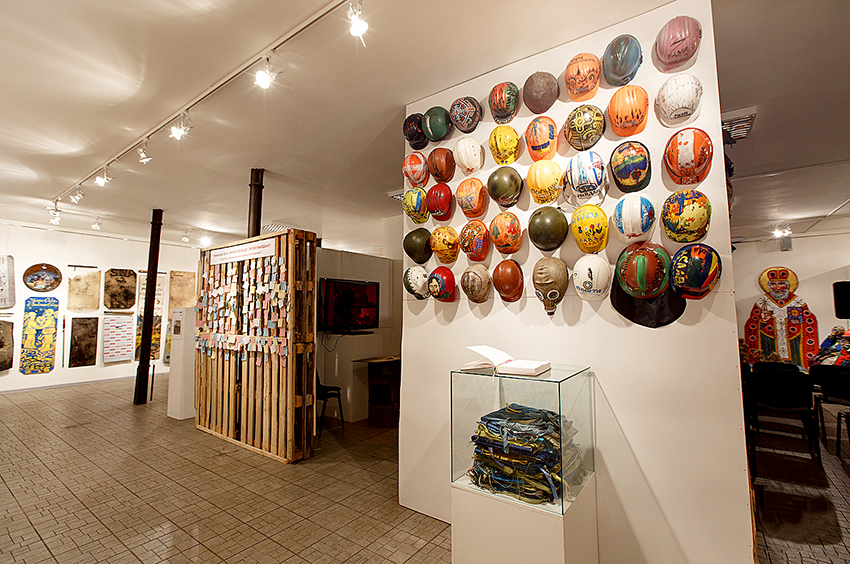Current Moment
As of now, Maidan Museum has over four thousand items in its collection. The basic collection, amassed by the founders of the Museum during and right after the Revolution of Dignity, has grown twofold.
Among the well-known items within the museum collection, there is a frame of the notorious “yolka”, flags and posters it was decorated with, numerous pieces of Maidan protestors’ garments, one of several catapults, wooden nativity scene that was part of Christmas Maidan decoration, the marble sculpture “New Ukraine” by Italian artist Roti, tents and utensils, a collection of Maidan and anti-Maidan campaign materials, and many other artefacts. Separately, there is Maidan Library, that very same library that was formed in the Ukrainian House and where the protestors used to spend their free time.
Our collection has grown not only from the point of view of numbers, but also in the range of subjects covered. Some items pertaining to the Orange Revolution appeared in it, as well as items related to other mass protests during Ukraine’s independence period, items from peaceful revolutions in other countries.
Also, we have more artworks created during Euromaidan, and later on under the impression of those events. The belongings of the murdered protestors, donated by their relatives, are very important to our collection. They help us narrate personal stories of the Heavenly Hundred. Another very important item is a topographical collection, made by the mapmaker Dmytro Vortman.
The Museum has a powerful photo and video archive that constantly grows. In 2018, a film director Volodymyr Tykhyi donated to the Museum all the video footage of the Revolution of Dignity produced by the famous film association “Babylon 13”.
Thousands of items from the collection of our Museum have been exhibited in Ukraine and abroad. A lot of promotional materials were created on the basis of the audio recordings and video footage. The Archive has been used by the volunteers to study the circumstances of the protests and determine those who committed crimes against the protestors.
The Museum continues to collect artefacts, documents and oral testimonies.
THE MUSEUM COLLECTION INCLUDES:
• artefacts;
• oral history;
• artworks (songs, poems, fiction, ornamental and fine arts);
• photos, audio recordings and video footage;
• leaflets, publications and documents.
We are particularly interested in:
• personal belongings, household items, objects used as defense during the Revolution of Dignity;
• personal belongings and oral testimonies of the participants of the Revolution on Granite and Orange Revolution;
• personal belongings of the Heavenly Hundred Heroes;
• weapons and household items of security forces;
• items of protest art;
• subject-related fiction;
• fragments of barricades;
• propaganda materials and symbols (flags, gonfanons, posters, etc.);
• photos, audio recordings and video footage of Maidan events;
• personal stories and testimonies related to the events of the Revolution of Dignity;
• items related to Maidans in other cities of Ukraine and the world;
• materials from the protest movements in other countries.

